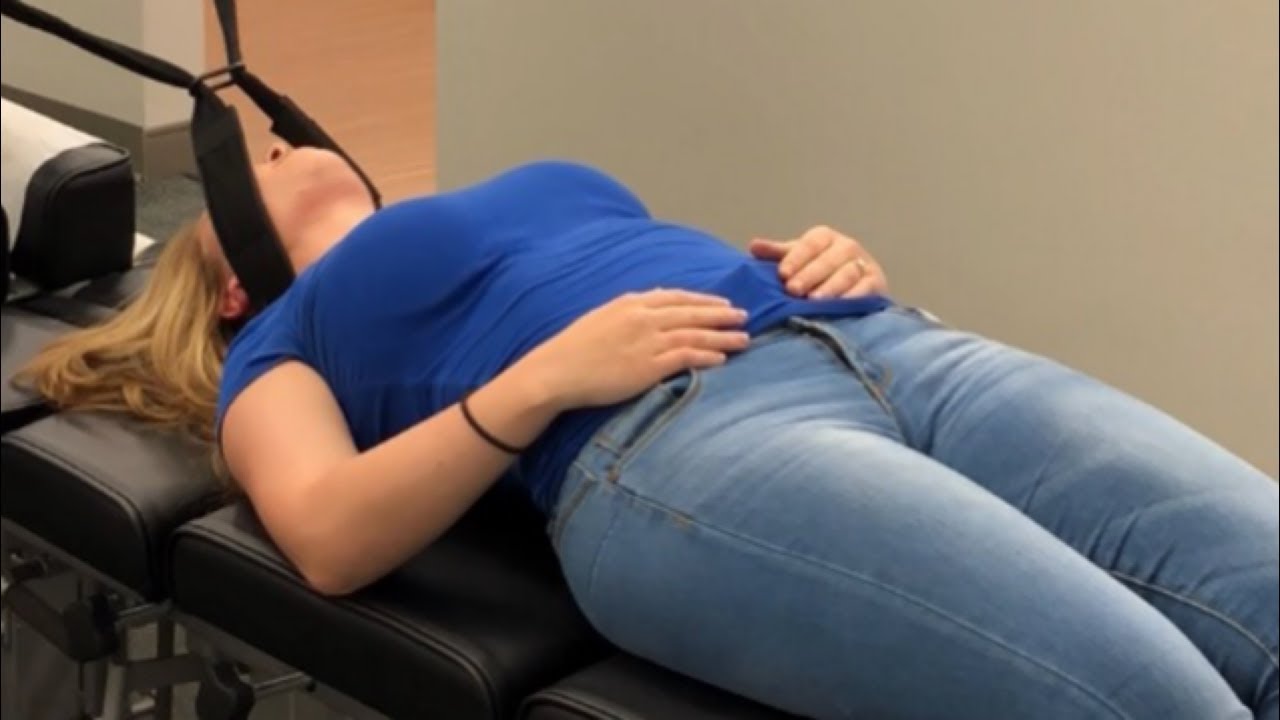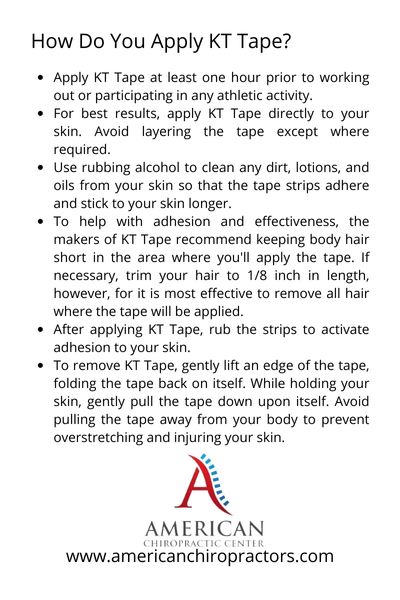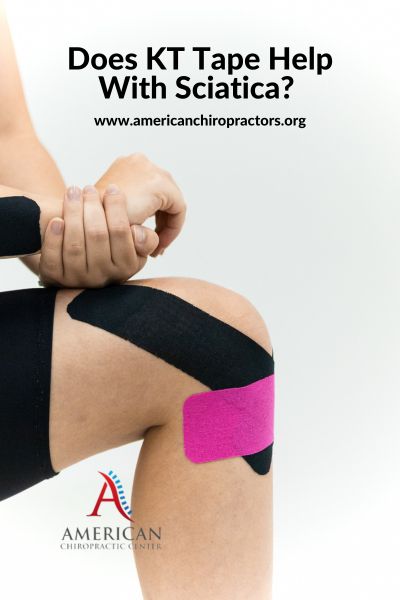Sciatica
The Pain Tape Game: Does KT Tape Help With Sciatica?

Sciatica can be a real pain in the back. Literally. The affected area of pain in sciatica can vary widely, often affecting the hip bone and causing leg pain. Even athletes who frequently stretch their calf muscle and engage their muscles regularly are not immune.
But let’s not get stuck in the ‘ouch’ moment. Here’s an interesting alternative that could help – KT Tape. Sciatica pain can be quite debilitating, often sending shooting pain from the lower back down one leg.
Read more about The Pain Tape Game: Does KT Tape Help With Sciatica

However, whether you’ve suffered from a calf strain due to a sports injury or been in a car accident that affected your lower back, the healing process begins with understanding the pain caused and finding appropriate ways to manage it.
But the right application of KT Tape may provide some temporary relief. How, you ask? Let’s dive into it. Just like an athlete prepares for a game, brace yourself, and let’s band together to tackle this pain.
More about The Pain Tape Game: Does KT Tape Help With Sciatica
What Is KT Tape?
KT Tape, short for Kinesiology Therapeutic Tape, is a type of elastic therapeutic tape used in occupational and physical therapy. It’s designed to provide support to your joints and muscles without affecting the range of motion. Kinesiology tape was first developed in the 1970s by a Japanese chiropractor, and since then, it has been widely used in healthcare and sports therapy worldwide.
Different types of kinesio tapes, such as the kinesio tex and kinesio tex classic, are available in the market. These tapes are generally used in kinesio taping, a scientific taping method. The tapes vary slightly in texture and material. For instance, KT Tape Original is made from original cotton, while the KT Tape Pro is made from synthetic material, providing higher durability.
Does KT Tape Help With Sciatica?
While KT Tape doesn’t cure sciatica, it’s thought to help manage the associated symptoms. The idea behind kinesiology taping for sciatica is to lift the skin over the painful area, reducing pressure on pain receptors underneath. In turn, this may help reduce discomfort and improve your movement.
Applying KT Tape requires a proper application process that is usually done by a qualified physical therapist. The tape can be applied over the lower back or along the path of the sciatic nerves to help reduce sciatic nerve pain. Applying kinesiology tape horizontally over the area or using two vertical strips can help offer relief.
How Does It Work?
The design of KT Tape allows it to stretch up to 140% of its original length. This means that when you apply the tape and then stretch and move the body part, the tape will ‘snap back’ and provide a pulling force on the skin. This pulling force is believed to increase circulation, promote healing, and help with pain relief.
When applied to the lower back, for instance, it’s important to apply the tape gently and not to stretch it too much. A horizontal strip or vertical strips are commonly used for this area. It’s also crucial to ensure the skin is clean before the tape is applied, to prevent any potential skin irritation or allergic reactions.
How to Apply KT Tape for Sciatica
Cut two strips of KT Tape. The first should measure the length from the lower back to the thigh. The second strip should be half the length of the first. Round the edges of the tape to prevent it from peeling off.
Apply the first strip from the lower back to the thigh, following the path of pain. This is known as the ‘I’ application. The tape should be stretched by about 75% in the middle, with no stretch at the ends.
Apply the second strip across the most painful area in a horizontal direction, stretching the tape to 80% in the middle.
Rub the tape gently to activate the adhesive.
Remember that the tape should be applied to the sensitive areas with care. Also, while applying KT tape, avoid touching the adhesive side of the tape as much as possible. The effectiveness of the adhesive can be reduced by oils and dirt from the skin.
Key Considerations
While many find relief with KT Tape, it’s not for everyone. Those with an allergy to adhesives may have a reaction to the tape. Additionally, it’s meant to be used as a part of a comprehensive treatment plan under the guidance of a healthcare professional and not as a standalone treatment.
Chronic pain conditions, such as degenerative disc disease or herniated discs, may also contribute to sciatica pain. In such cases, a healthcare professional may recommend a combination of treatments, like chiropractic care and manual therapies, along with the application of KT Tape. Pain caused by a pinched nerve, for instance, might require additional treatments such as heat or cold therapy. A heat pack can help with muscle soreness, while an ice pack can reduce inflammation.
Unlocking Relief: The Pain Tape Game Revealed – Does KT Tape Help With Sciatica?
While KT Tape can’t cure sciatica, it could be a helpful tool in your pain management kit. But like any treatment, it’s essential to use it correctly and under professional guidance. Don’t ignore worsening discomfort, and always seek medical attention if your pain persists or intensifies.
Remember, the road to recovery and pain relief is often not a sprint, but a marathon. Patience and consistency are key. In addition to using remedies like KT Tape for sciatica, maintaining a proper posture, engaging in gentle movement, and listening to your body can help fine-tune your healing process.
FAQs
What are the signs and symptoms of sciatica?
Sciatica typically presents as pain that radiates from your lower spine to your buttock and down the back of your leg. It’s usually felt on one side of the body. Other symptoms can include numbness, tingling, or muscle weakness in the affected leg or foot.
Shooting pain can occur when standing or in sudden movements. Feeling numbness or experiencing paresthesia, a pins-and-needles sensation, is also common.
Is KT Tape hard to apply by myself?
Applying KT Tape can be a little tricky if you’re new to it, but with practice and possibly the help of a friend or partner, you can get the hang of it. For further guidance, there are plenty of tutorials available online.
Remember, the effectiveness of KT Tape relies significantly on its application. To get it right, you might have to try a few times. Don’t worry if you don’t perfect it on the first go. There are always going to be bumps in the road as you learn.
Can I shower with the KT Tape on?
Yes, you can shower with KT Tape on. It’s designed to withstand the rigors of daily activity, including showers. Just pat the tape dry with a towel after – don’t rub it.
Keep in mind that while the tape is designed to stay on for a few days, it should be removed if it starts to peel off or causes any irritation or discomfort.
Can I use KT Tape for other pains and aches too?
Yes, KT Tape can be used for various types of pain, not just sciatica. For instance, it can be used for band syndrome, shin splints, plantar fasciitis pain, and more. It’s also commonly used by athletes for muscle and joint support.
Applying KT tape for knee pain, for example, might involve wrapping the tape around the kneecap or applying it on the outer leg, depending on the specific pain area. It can also be applied for an ankle sprain or to support the wrist, in which case wrist braces or an ankle brace might be used alongside.
How long does KT Tape last?
KT Tape can stay on for three to five days, even through showers and activities. However, it’s crucial to remove and reapply the tape if it begins to peel off or causes any skin irritation.
For persistent issues like chronic pain or severe injuries, it’s advisable to seek medical attention. While items like kinesiology tape, resistance bands, exercise mats, or massage creams are available in the realm of medical supplies, they are not substitutes for proper medical care.
Remember that your health is a priority, and you should seek the advice of healthcare professionals when dealing with any pain or discomfort. Be it elbow pain where you might need elbow pads, a frozen shoulder requiring shoulder support, or a degenerative disc disease needing specific care, medical guidance is crucial.
Does KT Tape help with Achilles tendon issues as well as sciatica?
KT Tape can provide support for both conditions. For Achilles tendon issues, the tape can be applied directly to the affected area. However, for sciatica, the application is typically focused on the lower back area. Both applications can help manage pain and improve movement.
I have adhesive allergies. Can I still use the KT Tape Original Cotton for low back pain?
Most users of KT Tape Original Cotton don’t experience adhesive allergies. However, if you have a history of allergic reactions to adhesives, perform a patch test on a small area first. If you notice any skin irritation, discontinue use and consult a healthcare professional.
Can I use KT Tape for ankle pain as well as for sciatica?
Yes, KT Tape can be used for various conditions, including ankle pain and sciatica. The tape is versatile and can be applied differently depending on the target area and condition. Always follow the correct application instruction for each condition.
How do I apply kinesiology tape for sciatica relief?
To apply kinesiology tape for sciatica, start by cutting two strips of tape. The first, shorter strip is applied vertically over the point of maximum pain in the lower back, with no stretch in the tape. The second, longer strip is applied horizontally, crossing over the first strip, forming an inverted cross. Make sure the skin is clean and dry before application.
Can KT Tape help with blood flow in cases of low back pain and sciatica?
Absolutely! When applied correctly, KT Tape lifts the skin, allowing for improved blood flow. This increased circulation can help reduce inflammation and facilitate healing, which may provide relief from low back pain and sciatica.
Can chiropractic adjustments complement KT tape use for sciatica?
Definitely. KT Tape can be a beneficial addition to chiropractic adjustments, aiding in maintaining correct alignment and support in between sessions. Always discuss your treatment plan with your healthcare provider.
Does the direction or position of the tape matter when applying KT Tape for lower back pain relief?
Yes, the direction and position of the tape can influence its effect. This “fine-tuning” can affect the level of support and pressure on muscles and joints. For lower back pain, the vertical application is often recommended, but always follow the specific instructions provided.
Can I combine massage therapy with the use of KT Tape when dealing with sciatica and neck pain?
Yes, KT Tape can be used in conjunction with other treatments, such as massage therapy. While the tape provides sustained support, massage therapy can work to release muscle tension, further aiding in relief. As always, this should be done under the guidance of a healthcare professional.
Does KT Tape provide relief from nerve compression associated with sciatica?
KT Tape can be used as part of a comprehensive treatment plan to manage the symptoms of sciatica, including nerve compression. It does so by providing gentle support to the affected area, potentially alleviating pressure on the sciatic nerve.
What are some common causes of sciatic pain that KT Tape can help with?
Sciatic pain can be caused by a variety of factors, such as herniated discs, spinal stenosis, and poor posture. While KT Tape can’t directly address these underlying causes, it can assist in managing the resulting pain and discomfort by providing support and promoting better posture.
How do patients benefit from applying KT Tape for sciatica?
Patients may experience a reduction in pain and increased mobility when using KT Tape. The tape provides support to the soft tissue surrounding the sciatic nerve, potentially helping to alleviate discomfort and facilitate movement.
Can KT Tape improve poor posture contributing to my sciatica pain?
Yes, when applied correctly, KT Tape can help promote better posture. It does this by providing support to the relevant muscle groups and encouraging proper spinal alignment, which can relieve the pressure on the sciatic nerve.
Does the type of tape strip used affect the level of support provided by the KT Tape?
Not necessarily, but the length and placement of the strips of tape can make a difference in the level of support and relief experienced. Taping methods can be varied based on the individual’s needs and the area of pain.
Can I use KT Tape for calf strain as well as sciatica?
Yes, you can. KT Tape can be applied to various parts of the body, including the calf. For calf strain, you’d place the tape over the area of pain, which may differ from the taping method for sciatica.
How does applying KT Tape for lower back pain help with sciatica?
Sciatica often manifests as lower back pain. When KT Tape is applied to the lower back, it can help to reduce the pressure on the sciatic nerve, thereby helping to alleviate pain and discomfort.
Is there a specific method for taping when using KT Tape to help with sciatica pain?
Yes, typically, two vertical strips of tape are applied to the lower back area for sciatica. The strips should run parallel to the spine to provide vertical compression and support. It’s always best to follow specific application instructions or consult a healthcare professional.

Doctor Osvaldo Pepa, Neurosurgery Service Physician at Hospital San Martin, La Plata, Argentina. I graduated last November 16, 1984 with a Medical Degree at the Universidad Nacional de La Plata. The Medical Board of La Plata, District 1, licensed me as a Neurosurgeon in 1990. I hold a Provincial and National License and an active member of the Neurosurgery Society of La Plata, World Ozone Therapy Federation, and Inter American Society of Minimally Invasive Surgery.























